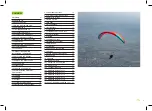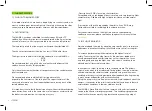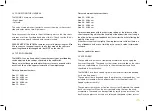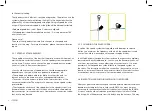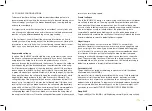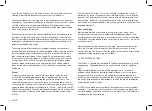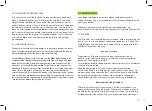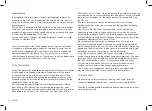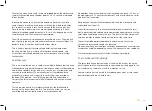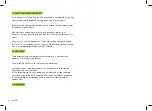
15
To enter this manoeuvre, the B-risers are gripped below the maillons and
symmetrically pulled down together (approx. 20-30 cm) and maintained
in that position.
Initiating the maneuver is physically demanding because it can take
some strength to pull the risers down until the wing is deformed. After
this, the physical effort is less. Continue to hold the risers in position.
Once the wing is deformed, its horizontal speed will drop to 0 km/h;
vertical descending speed increases to –6 to –8 m/s, depending on the
conditions and how the manoeuvre is performed.
To exit the manoeuvre, simultaneously release both risers. The wing will
then slightly surge forward and automatically return to normal flight. It is
better to let go of the lines quickly rather than slowly.
This is an easy descent technique to perform, but remember that
the wing will stop flying, will lose all forward horizontal speed, and
its reactions will change markedly when compared to a normal flight
configuration.
5.4 SPIRAL DIVE
This is a more effective way to rapidly lose altitude. Beware that the wing
will experience and be subjected to a tremendous amount of descending
and rotating speed (g-force), which can cause a loss of orientation and
consciousness (blackout). This manoeuvre must therefore be done
gradually to increase one’s capacity to resist the g-force exerted on
the body. With practice, you will fully appreciate and understand it.
Only practise this manoeuvre at high altitude and with enough ground
clearance.
To start the manoeuvre, first weight shift and pull the brake handle
located on the inner side of the turn. The intensity of the turn can be
controlled by braking slightly using the outer brake handle.
A paraglider flying at its maximum rotating speed can reach –20 m/s, or
the equivalent of a 70 km/h vertical descent, and will stabilise in a spiral
dive from 15m/s onwards.
Good enough reasons to familiarize yourself with the manoeuvre and
understand how to exit it.
To exit this manoeuvre, the inner brake handle (down side of the turn)
must progressively be relaxed while momentarily applying tension to the
outer brake handle opposite to the turn. The pilot must also weight shift
and lean towards the opposite side of the turn at the same time.
The exit should be performed gradually and smoothly so that the
changes in pressure and speed can be noted.
When exiting the spiral, the glider will briefly experience an asymmetrical
acceleration and dive, depending on how the manoeuvre was carried out.
Practise these manoeuvres at sufficient altitude and carefully.
5.5 SLOW DESCENT TECHNIQUE
This technique allows descent without straining the wing or taxing the
pilot. Glide normally while searching for descending air and begin to turn
as if climbing in a thermal, but with the intention to sink.
Common sense has to be used to avoid dangerous areas of rotor when
looking for descending air. Safety first!
Summary of Contents for IKUMA 2
Page 1: ...IKUMA 2 User s manual...
Page 19: ...19...
Page 22: ...10 3 RISERS PLAN 22...
Page 23: ...10 4 SUSPENSION PLAN 23...
Page 29: ...niviuk com...



